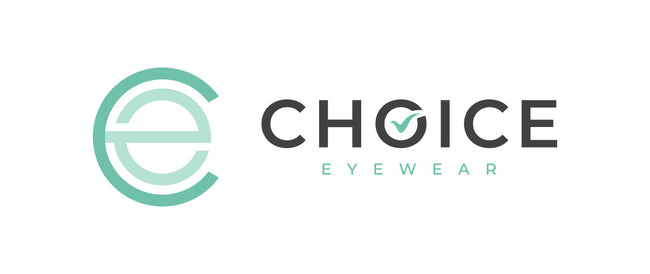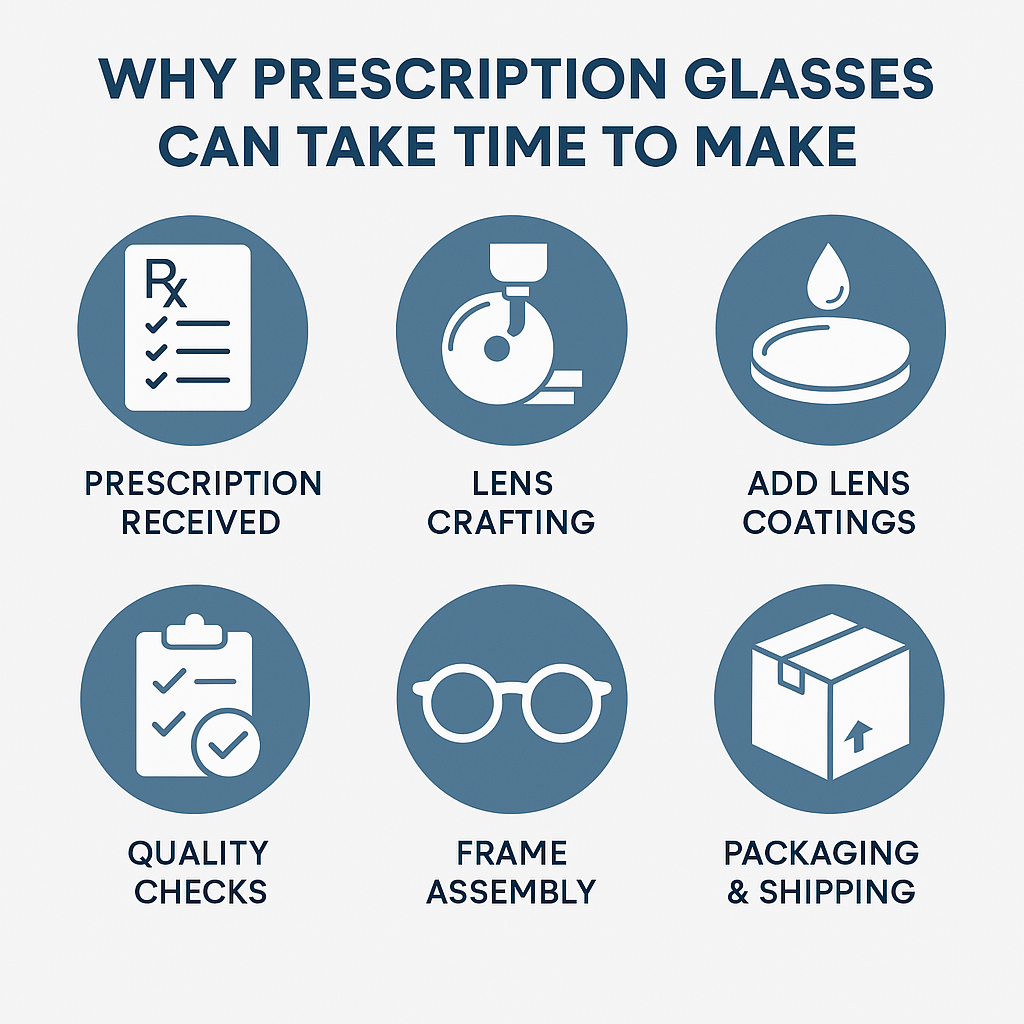🕒 Why Prescription Glasses Can Take Time to Make
(And Why That’s Actually a Good Thing)
If you’ve ever ordered prescription glasses and wondered why they take a few days—or even a couple of weeks—to arrive, you’re not alone.
Prescription eyewear isn’t like buying off-the-rack sunglasses. Behind the scenes, there’s a detailed process involving custom lens crafting, lab precision, and quality checks to ensure you get exactly what you need.
Let’s break down what’s happening between the time you order and when your glasses finally arrive at your doorstep:
🔬 1. Your Lenses Are Made Just for You
Unlike ready-made readers, prescription lenses are customized to match your exact vision correction needs:
-
Your SPH, CYL, AXIS, and ADD values are unique to you.
-
If you ordered bifocals, progressives, or prisms, it adds extra complexity.
-
For strong prescriptions, lenses often need to be thinner or specially curved, requiring more steps.
🧠 Fun fact: Many labs use digital surfacing to grind lenses to a precision of 0.01mm!
🧪 2. Lens Treatments Take Time
If you chose any upgrades (which most people do), they require additional processing:
-
Anti-reflective coating
-
Scratch resistance
-
Blue light filtering
-
Photochromic (light-adaptive) lenses
Each treatment has a curing/drying process—and must be layered and tested properly. Rushing these steps can lead to peeling, distortion, or lens damage later on.
👨🔬 3. Every Pair Goes Through Quality Checks
Before your lenses go into your frames, they’re:
-
Measured and inspected
-
Cross-checked against your prescription
-
Cleaned and polished
Many labs run multiple rounds of inspection, especially for progressive or multifocal lenses, to ensure accuracy and visual comfort.
🛠️ 4. Assembly Requires Precision
Once your lenses are ready, they’re carefully mounted into your chosen frame:
-
Frames are heated or adjusted to fit your lenses perfectly
-
Lenses are aligned to your pupillary distance (PD) and segment height (for bifocals/progressives)
Poor alignment can cause headaches or blurry vision—so getting it right is worth the extra time.
🚚 5. Shipping + Delays Outside Our Control
After everything is complete, your glasses are packed and shipped. But keep in mind:
-
Labs may experience backlogs or shortages in materials
-
Customs or FDA checks (especially for international orders or medical items) can delay delivery
-
Weather and carrier issues can also affect timing
👓 Good Glasses Take Time
We totally get it—you’re excited to start seeing clearly! But creating a pair of high-quality prescription glasses is a craft, not a quick print job.
Taking a few extra days ensures your eyewear is accurate, comfortable, and built to last.


